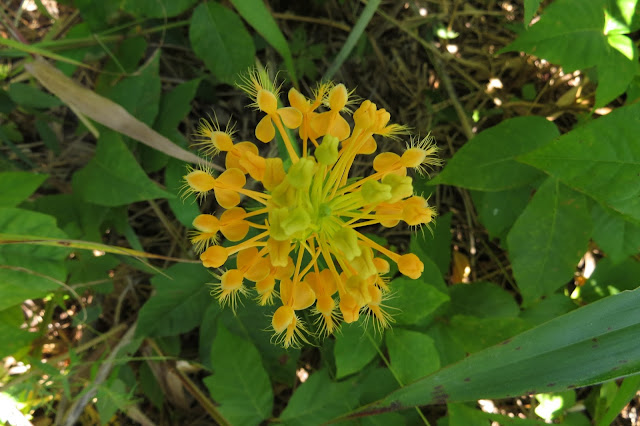This has been a glorious summer for wildflowers, thanks to all the rain that we have gotten. Their diversity of form, color and habitat preference never ceases to amaze me. This diversity is quite well illustrated by the wonderful variety of terrestrial orchids that we have here in Ohio, and Bill and I have continued to make a point of seeing as many of them as possible this summer. As I said in my previous orchid posts, some are stunning and some are inconspicuous, but all are interesting and many are uncommon to rare.
I'll start with the beautiful Small Purple Fringed Orchid (Platanthera psycodes), which we saw in the shadowy woods along the boardwalk at Cedar Bog in June. It inhabits a variety of moist habitats, such as stream and river banks, roadside ditches, and moist meadows, but it is not common at all in Ohio. Butterflies and a variety of diurnal and nocturnal moths are responsible for pollinating the flowers.
Also growing at Cedar Bog in June is the gorgeous Grass Pink (Calopogon tuberosus).
This orchid flower is kind of "upside down" compared to most. Most orchid flowers rotate during development so that their "lip", which is often fringed, ridged or colorful to attract insects is at the bottom of the flower. In this case, however, the "lip" remains above and the column, which contains the reproductive structures, is below. If a bee lands on the hairs of the upper lip, the lip will swing down under the weight of the insect, and the pollen will be deposited on the bee's back. Off it will go to another flower and transfer the pollen. I like this view of a cluster of flowers:
I'm not sure that there is much more stunning than the Yellow Fringed Orchid (Plantanthera ciliaris).
It has a very unusual distribution in Ohio, occurring in the northwest corner near Toledo and in the very southern part of the state:
We saw it in both areas; interestingly it bloomed earlier in the north than in the south. Speculation as to why there are these very separated populations has to do with ancient rivers and glaciation. Yellow Fringed Orchids are considered to be "butterfly specialists" because they attract and are pollinated by butterflies, not surprising given the long, nectar-containing spur. I loved the near-symmetry of this view from above:
Some Ohio orchids have no chlorophyll; they receive all their energy from a complex interrelationship with fungi, many of which in turn may have nutritional connections to trees. Crested Coralroot (Hexalectris spicata) is a prime example of this, and it occurs on alkaline soils in rocky woodlands and forested streambanks.
We spotted this individual in Adams County in July on a very rainy day which enabled the colors of this plant to really show beautifully. I'm not sure if the insect on the right side was looking to pollinate the plant or just to hide from the rain!
July brought both the showiest and perhaps the least conspicuous orchids! Here is the latter, the Green Adder's Mouth (Malaxis unifolia).
Blooming at Wahkeena Nature Preserve, this plant was no more than 5 inches high. Easily overlooked because it is completely green, it is unmistakably an orchid with its parallel-veined leaf and the typical flower structure of three sepals and 3 petals, with one petal modified to form a tiny "lip."
I think that one of my favorite orchids this summer was another one that has no showy color, the Cranefly Orchid (Tipularia discolor). I love the way the flowers look like flying insects along the stalk:
Like the Puttyroot Orchid that I mentioned in a previous post, the Cranefly Orchid produces a single leaf in the fall that persists above the leaf litter through the winter, storing energy below the ground:
The leaf disappears in the spring, and the plant only blooms when it has enough energy to do so, which may not be every summer. It grows in shady forest and can be quite difficult to spot.
The leaf disappears in the spring, and the plant only blooms when it has enough energy to do so, which may not be every summer. It grows in shady forest and can be quite difficult to spot.
I have some more orchids to share but they will have to wait for another post!









Beautiful (especially the showy yellow fringed orchid). Do I see wintergreen at the bottom of the picture of the cranefly orchid? I love smelling it. Thanks, as always. The map was very interesting.
ReplyDeleteIt looks a bit like wintergreen, but it is actually Vinca minor or myrtle. This site is adjacent to a cemetery and I think the vinca has crept in to the nature preserve, unfortunately.
ReplyDelete